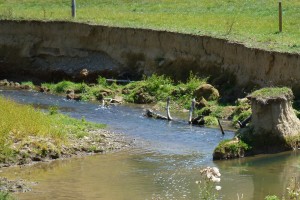Erosion & sediment
Soil erosion is a suite of processes by which soils are worn away – by flowing water, wind, rainfall, temperature changes, ice, gravity, and other natural forces – and deposited elsewhere, usually downslope, as sediments. Soil erosion is often increased by human activity such as agriculture, changes in land use and vegetation cover, and construction.
We are involved in many research projects to measure and manage soil erosion, including building our fundamental understanding of erosion processes in New Zealand, and the study of landscape dynamics and responses to environmental change.
We are highly skilled in erosion and sediment modelling – what causes erosion and where the resulting sediment ends up – through which we develop tools for control and mitigation of soil and land degradation.

